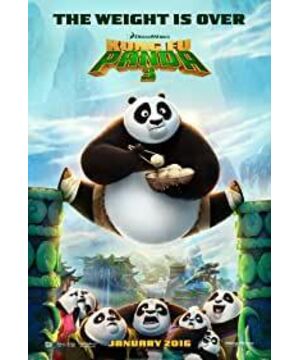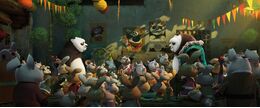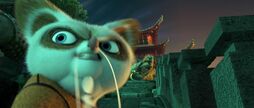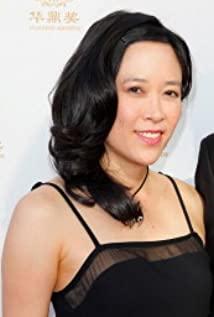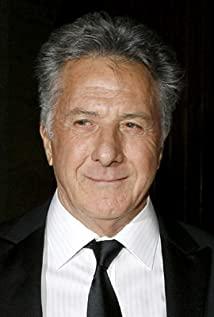The thick and light ink mood, the flowing fighting scenes, the classical tunes of the silk and bamboo strings, plus the shadow play, traditional ancient buildings, Tai Chi Yin-Yang... Compared with the first two Kung Fu Panda plays, "Kung Fu Panda 3" is indeed more Chinese. Perhaps as director Stevenson said, Kung Fu Panda is a love letter to China.
This love letter uses a beautiful colored paper.
I don’t know if you have observed it carefully, but the film’s depiction of Chinese elements is indeed quite nuanced, such as: the perverted and spicy food that the tiger wants when buying breakfast; the red robe and purple lining of the virtues; similar to the panda home in Qingcheng Mountain in Sichuan, and even Baozi noodles pepper noodles. All kinds of details have well reflected the unique characteristics of China. However, the biggest feature of this one is indeed the Chinese dubbing. Before watching the movie, I wanted to complain that there were only Chinese dubbing scenes in the movie theater, but after the end, I found that it became the most gorgeous pattern on this color note. Huang Lei's steady and naive, Jackie Chan's vicissitudes of life, Jay Chou's "famous saying" "Oh, it's not bad."... Not only the cooperation of the selected voice and characters, but also the film has a kind of home-grown down-to-earth atmosphere a feeling of. And grounding is indeed an aspect that many local Chinese films want to do, but have been detached from.
This love letter is poetic but childish.
A Bao began to break away from the guidance of his master, and slowly began to find his true self. Finally, under the inspiration of everyone, he realized the power of venting his anger and defeated the villain, becoming a real dragon hero. Self-knowledge, detachment, father-son affection... The whole story is full of Chinese-style poetry. In particular, the introduction of the concept of qi deepens the simple martial arts and martial arts into the essence of Tao. Although the foreigners' understanding of the five elements of Tao, Qi, Yin and Yang is not comprehensive, and people always feel a little strange, but from the concept of qigong that only thinks that it can strengthen the body, it can be regarded as a kind of progress. However, on the whole, the story is still a little immature. For example, the final turning point has become a classic scene in Dragon Ball, gathering everyone's strength to play vitality bombs.
This love letter is beautiful but it was written to us by a foreigner.
Whenever we see "banana animation" (Chinese themes, animated films made by foreigners) shine in the Chinese market, we will sigh, when will domestic animation be available. Does Chinese animation lack technology? The Great Sage returned to tell us that there was no shortage. Are you lacking in ideas? The 1988 "Landscape Love" has already told us that whether it is the soundtrack or the theme concept, we can inherit the classical culture and make it shine. What we lack may just be a lack of faith in a young and commercialized market. When will we be able to write a delicate love letter to ourselves.
View more about Kung Fu Panda 3 reviews


